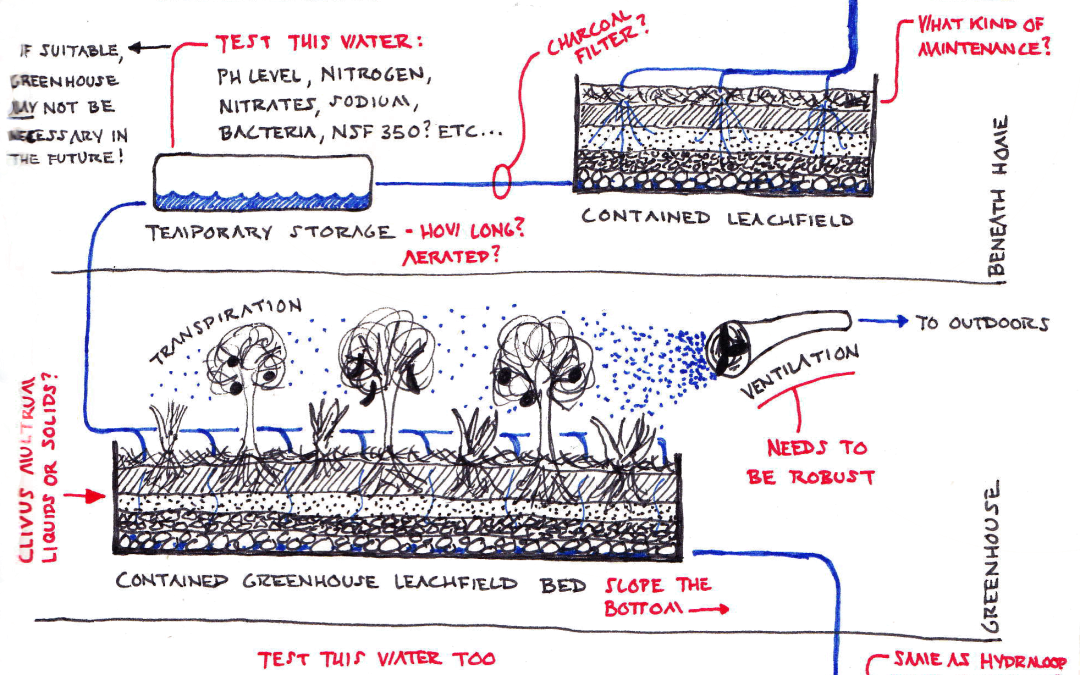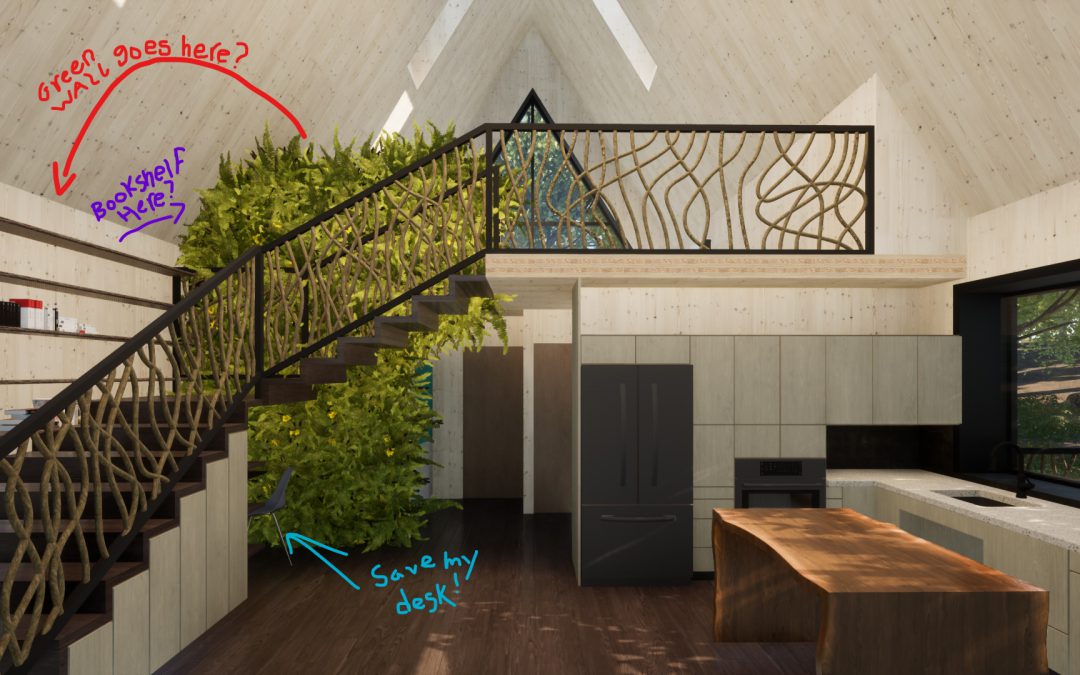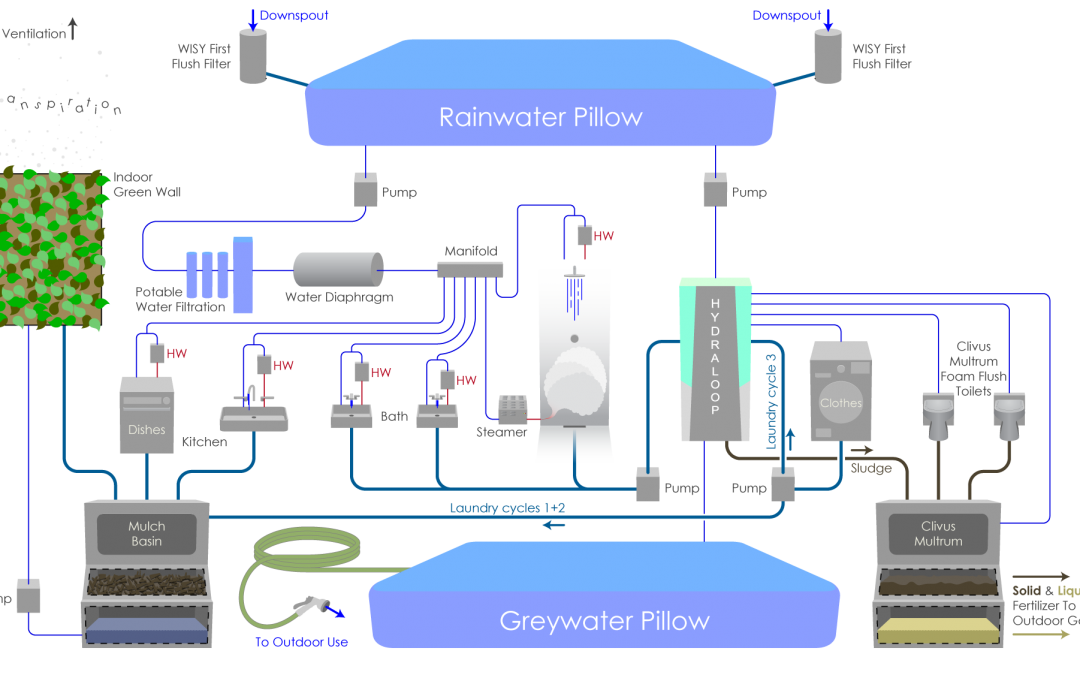
by William | Oct 13, 2021 | Small Footprint
Dear Readers,
Holes were dug. Water was lugged. Our arms are now so sore and tired, we couldn’t even give a hug…
If anyone ever wondered what was involved in a soil and percolation test, that basically sums it up.
Even though we have no intention to install an on-site septic system (like a sand mound), the PA DEP has stated that for us to pursue an experimental permit (and have fun with our compost toileting and greywater reuse) we must first prove that a conventional system can be put in if need be. That means we must pass both a soil and a percolation test.
Soil Test
For those more interested in the technicalities, William and I first had to start with our SEO doing a soil test. If we passed the soil test, the SEO would then proceed to do a percolation test (colloquial term, “perc test”). The point of the soil test is to see if our soil is of a grade and quality that can effectively filter wastewater. The SEO needs to have multiple holes dug down to where “glacial till” can be found (the level in soil most undisturbed, and brought about by the movement of glaciers). These ‘holes’ (‘pits’, or even ‘trenches’ is more like it) had to be dug in an area near our home’s prospective location.
The adventure began with us figuring out how to dig (what I thought was supposed to be) three or four 4-5’ long and 10’ deep trenches for our soil test.
Yes, 10 feet deep trenches…plural…trenches. And what digs 10’ deep trenches? A backhoe. But, backhoes can be big. Very big. With a big footprint on our land and too big to fit through the 5 to 7-ish ft. wide (and 300 foot long…) path we currently have up to our home’s intended location and where this soil test needed to occur. So, what else can dig a 10’ deep trench that can fit through our small path? People.
And thus, with optimism in our hearts, naivety in our young brains, and a ladder standing by…we pulled up our sleeves and dug.

by William | Aug 11, 2021 | Net Zero
Dear Readers,
Yes. Leach field. Just when you thought this addition could not get any cooler with its greywater absorbing plants and front entry hobbit door~ we fully made it into an indoor leach field!
Ha! If your heads are screaming “What?!?” That’s fine. Ours are too. But I think we’ve got this…
Let’s start with the mulch basin. Remember how we were thinking of using that as the preliminary filtration means for our kitchen and laundry effluent before pumping it back into the house to our indoor green wall? Well, just as we ditched the green wall…we are now ditching the mulch basin.
Scratching it. Throwing it away. Mulching up the mulch. And…making a new and improved plan to propose to the PA DEP! Whoop whoop! So. Much. Greywater. Fun.
Here is what we are thinking of replacing the mulch basin with:

by William | Jul 21, 2021 | Net Zero
Dear Readers,
You see that crazy scribble scrabble in that image down below?
This blog is essentially just a more neatly transcribed version of those notes. If you feel an inclination to be totally absorbed by a whirlwind brainstorm of how to handle our “too-much-mulch-basin-filtered-greywater conundrum,” then this blog is for you. I will try to make it brief. Besides putting out our ideas to the world-wide web, we more so are looking for feedback and suggestions from you! Any thoughts are more than welcome.
So, without further ado…
This is our problem…
Some of you may already be familiar with this one of many issues with The Seed. To briefly sum it up, our mulch basin will end up filtering more greywater on a daily basis (about 30 gallons) than the indoor green wall needs in a week (about 20 gallons). You can read more about the conundrum in its entirety here.
The ideas that resulted from a morning wading through vexing greywater are as follows:

by William | Jun 30, 2021 | Net Zero
Dear Readers,
We have a slight conundrum. Nothin’ new…just thought I’d start working it out through writing, while simultaneously perhaps picking your brains for ideas 🙂
William and I have been working diligently to not only find ways to cut our overall water consumption so that we can comfortably rely solely on rainwater collection for all our potable and non-potable needs, but we have also been attempting to treat all of our wastewater on-site while still meeting PA DEP codes. If you have read “The Water Cycle of the Seed III?” then you are familiar with our aim to keep all of the treatment of the water within our home’s envelope in order to achieve our end goals and comply with said code.
Whelp, the PA DEP took the time to look at our home’s nifty water cycle diagram, and they were pretty unofficially ok with it! We will have to pursue an experimental permit, and verify a couple of things with our local code officials…but…overall, it was at the least a ‘green light’ to continue chuggin’ along with our current plan and see what becomes of it. Which is super exciting!!
However, that does lead to this latest conundrum: Given the ‘go ahead,’ we took a closer look at our mulch basin. We quickly realized that our mulch basin is going to receive a disproportionately large amount of greywater in need of treatment each day, in comparison to the amount of water that our prospective indoor green wall is actually going to need.

by William | Apr 28, 2021 | Net Zero
Dear Readers,
I think this is Round III of our plan to harvest and treat all of our water on-site…it may actually be round IV…or V. In truth, what version of the ideal we have bounding about in our brains does not matter. What matters, is this is what we have officially just shipped off for interpretation by code!
The goal we have set for ourselves is to meet the Water Petal as set by the Living Building Challenge, while also meeting PA Code. We want to not only maintain, but enhance, the safety and health of our surrounding natural environment and communities.
What you are about to read is essentially how we explained our system to the DEP. However, when I had some loved ones proof-read our email, they said it was overwhelming and boring.
So, I still sent our extensive email away to code.
While it is still certainly overwhelming, code does not care if it is boring. They just want to do their job and make sure we don’t jeopardize the health or integrity of our environment or neighbors.
But, to make it interesting for those who do find this overwhelming and boring, I am going to explain it in the context that you are a little, adorable, droplet of water. While small in stature, you are incredibly significant to our family’s, and the Land of the Laurel’s, survival.
My dear little droplet, your life has no real beginning or end. You just are. You belong to, and are a cycle that determines the life or death of every living being on this planet. For our story, we will begin with one of your many falls.
All excited and condensed with so many other droplets, it is now the time for you to let the weight of your condensation be pulled by gravity to the earth. Like a sneeze that has just built up for way too long, you finally let it go!
WeeeEEEEEEEEEEEEEEEEE!!!!!





